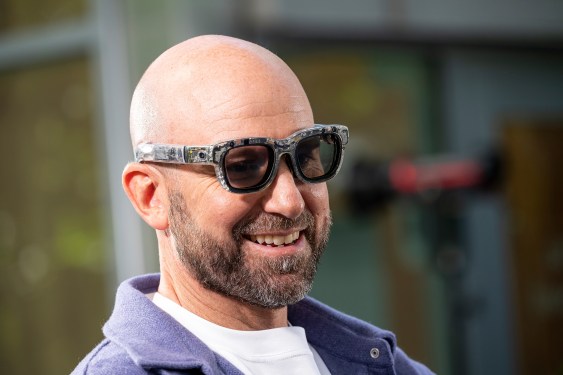Meta Chief Technology Officer Andrew Bosworth used his Instagram account to explain, in more technical detail, why multiple demonstrations of Meta’s new smart glasses technology failed during Meta Connect, the company’s developer conference this week.
Meta introduced three new pairs of smart glasses on Wednesday. These included an upgraded version of its existing Ray-Ban Meta, a new Meta Ray-Ban Display that comes with a wristband controller, and the sports-focused Oakley Meta Vanguard. However, at different points during the event, the live technology demonstrations failed to work.
In one demonstration, cooking content creator Jack Mancuso asked his Ray-Ban Meta glasses how to get started with a particular sauce recipe. After repeating the question “What do I do first?” with no response, the AI skipped ahead in the recipe, forcing him to stop the demo. He then tossed it back to Meta CEO Mark Zuckerberg, suggesting that the Wi-Fi may have been malfunctioning.
In another demo, the glasses failed to pick up a live WhatsApp video call between Bosworth and Zuckerberg. Zuckerberg eventually had to give up. Bosworth walked onstage and joked about the “brutal” Wi-Fi. “You practice these things like a hundred times, and then you never know what’s gonna happen,” Zuckerberg said at the time.
After the event, Bosworth held a Q&A session on his Instagram about the new technology and the live demo failures. He explained that it was not actually the Wi-Fi that caused the issue with the chef’s glasses. Instead, it was a mistake in resource management planning.
“When the chef said, ‘Hey, Meta, start Live AI,’ it started every single Ray-Ban Meta’s Live AI in the building. And there were a lot of people in that building,” Bosworth explained. “That obviously didn’t happen in rehearsal; we didn’t have as many things,” he said, referring to the number of glasses that were triggered.
That alone was not enough to cause the disruption. The second part of the failure had to do with how Meta had chosen to route the Live AI traffic to its development server to isolate it during the demo. When it did so, it did this for everyone in the building on the access points, which included all the headsets. “So we DDoS’d ourselves, basically, with that demo,” Bosworth added. A DDoS attack, or a distributed denial of service attack, is one where a flood of traffic overwhelms a server or service. In this case, Meta’s development server was not set up to handle the flood of traffic from the other glasses in the building, as the company had only planned for it to handle the demos alone.
The issue with the failed WhatsApp call, on the other hand, was the result of a new bug. The smart glasses’ display had gone to sleep at the exact moment the call came in, Bosworth said. When Zuckerberg woke the display back up, it did not show the answer notification to him. The CTO said this was a “race condition” bug, where the outcome depends on the unpredictable and uncoordinated timing of two or more different processes trying to use the same resource simultaneously.
“We’ve never run into that bug before,” Bosworth noted. “That’s the first time we’d ever seen it. It’s fixed now, and that’s a terrible, terrible place for that bug to show up.” He stressed that Meta knows how to handle video calls and that the company was disappointed about the bug appearing there.
Despite the issues, Bosworth said he is not worried about the results of the glitches. “Obviously, I don’t love it, but I know the product works. I know it has the goods. So it really was just a demo fail and not, like, a product failure,” he said.

